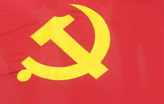People
Tycoon returns home to his Shanghai muse
Updated: 2011-07-04 08:13
By Yang Yijun (China Daily)
|
 Roy E. Barnes stands beside an oil portrait of his uncle Sir Victor Sassoon at the Fairmont Peace Hotel. Yong Kai / China Daily |
Seventy years after he left Shanghai, legendary tycoon Sir Victor Sassoon has returned home.
Thanks to a donation by his closest living family members, his portraits and those of his wife Lady Sassoon have arrived at the Fairmont Peace Hotel, the signature property on the Bund that he built and prided himself on the most.
With the portraits hanging in his former residence, the hotel's presidential suite, the man who played a crucial role in building 1930s Shanghai has returned to his beloved home and reunited with the views of the Bund and the Huangpu River outside the windows, which he called "his muse".
"It's a very emotional experience for us to come back to the place where he once lived and entertained. It's nice to sense his presence back in all its former glory," says Sassoon's nephew Roy E. Barnes. He was speaking at the unveiling of the pictures on May 31.
Barnes and his two older sisters became Sassoon's nephew and nieces after Sassoon married their aunt, an American nurse, in the 1950s.
The oil painting portraits, completed in London in 1960, were originally displayed in the family's home in Nassau of the Bahamas, where Sassoon spent the last years of his life.
"Victor just had a few things changed and he loved it," says Barnes' older sister Evelyn Barnes Cox. "We think it's a great resemblance. It sort of shows his personality, sense of humor and his zest for life."
Sir Victor Sassoon belonged to the fourth generation of the Sassoon family, one of the most famous Jewish families in Shanghai. He first came to the city in 1923 after he inherited the New Sassoon Company. The pioneer transferred most of the money the company earned in India to Shanghai and started to build his business empire in the then "Paris of the East".
He opened more than 30 companies in Shanghai and built six building which exceeded 10 floors, at a time when the city had just 28 buildings of similar size in the 1940s.
Apart from the Fairmont Peace Hotel, whose green copper pyramid is now a defining feature of the Bund skyline, Sassoon's properties included the Cathay Mansions, which is now the north building of Jinjiang Hotel, the Cathay Cinema on Central Huaihai Road and the Hamilton Building and Metropole Hotel at the intersection of Fuzhou Road and Central Jiangxi Road.
When the Japanese occupied the city in 1941, Sassoon sold most of his properties in Shanghai, moved to Dallas and finally settled in Nassau of the Bahamas.
While Sassoon's lavish parties and personal life in Shanghai remained a legend, he started his new business in Nassau, where the headquarters of Sassoon Group is now located.
"He was among the first people from around the world to go there and start a business. He used a business model that was similar to the one in Shanghai, but on a smaller scale," says Barnes, who has served as the managing director of the group for 30 years. The company's business covers insurance, banking, construction, property management and trust management.
"As he got older, he decided that he wasn't going to create business enterprises on the level that he had here in Shanghai, and took more interest in things like his hobby of horse racing," Barnes continues.
Sassoon won the English Derby four times in eight years between 1953 and 1960, a record at that time.
Cox adds that Sassoon loved photography and always had a camera hanging around his neck. "When people would come, he would go around the room and photograph them. That was just his way of reaching out," she says.
Although Sassoon didn't talk much about his life in Shanghai, the Barnes family remembers his love for China.
"I do remember him talking about China. He had great hope for the Chinese people," says Brenda Barnes Marocco, another older sister of Barnes.
"He missed really good Chinese food and taught us how to use chopsticks," she recalls.
"We saw him as a person who would talk to you, get to know you and ask you questions, and a person who was not impressed by your status or your race or any of those superficial things," she says.
After Sassoon died of heart disease in 1961, Lady Sassoon established the Sir Victor Sassoon (Bahamas) Heart Foundation to assist Bahamian children in need of heart surgery. It is celebrating its 50th anniversary this year and has helped thousands of Bahamian children with heart disease.
"He was a person who lived his life to the fullest. He was fully capable of seeing dreams through to reality," Barnes says. "He enriched our lives in every way."
"Our uncle wasn't someone who talked about the past a lot. But we have read so many stories of his life in Shanghai. That he's come home to this place means so much to him," he says.
China Daily

Specials

90th anniversary of the CPC
The Party has been leading the country and people to prosperity.

My China story
Foreign readers are invited to share your China stories.

Green makeover
Cleanup of Xi'an wasteland pays off for ancient city